 ………
……… 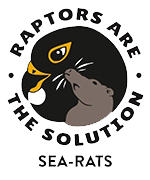 ………
………  ………
………
An Upper Queen Anne, Seattle, mixed-use business district demonstration pilot study managed by Raptors Are The Solution to illustrate cost savings and effective rat population management using a non-toxic, rat birth control solution called ContraPest®, as a replacement for a certain class of rat poisons that are harming and killing non-target wildlife and pets. We were able to reduce the rat population by 91 percent on this site in just a few months.
Read the latest news coverage about this project.
Queen Anne is working to become a showcase neighborhood for other communities to follow in their own poison-free rat birth control campaigns. The pilot study team aims to have its documented, successful protocols available for others to use, in the Community and Pest Control Playbook later this year.
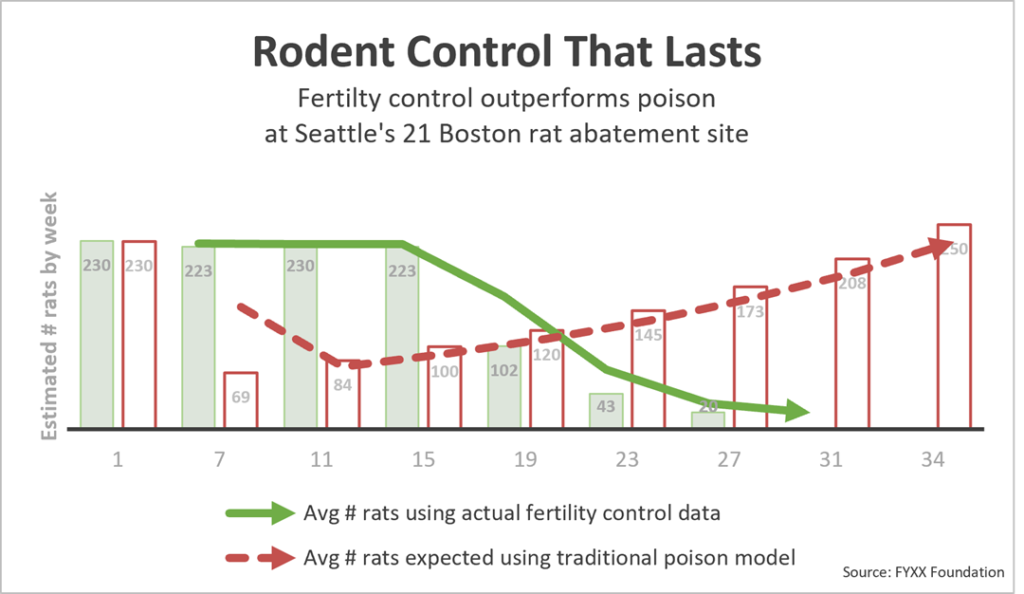
A note about our inaugural Queen Anne demonstration pilot study participant TWENTY-ONE BOSTON
Demolition of Queen Anne’s Safeway grocery store happened to make room for 325 apartments situated on top of a new 50,000 square foot grocery store and underground parking. Per the Seattle department of construction and inspections, the TWENTY-ONE BOSTON project was required to set out rat poison bait stations prior to ground disturbance caused by demolition. Queen Anne Pilot Study’s first participant was developer and landowner Maria Barrientos, marking Seattle’s first developer to use a non-toxic fertility control rat abatement strategy for demolition. We are proud to be reaching this trailblazing milestone together as we create a safer urban habitat for wildlife and pets.
At the 7th month mark of managing the future build site’s resident Norway Rat population with rat birth control, the pilot study achieved, and held steady, a 91% reduction of the original rat population. The construction superintendent went so far as to remark that he’s never demolished a building where he didn’t see a single rat. Typically, legacy food-centric buildings are infested with rats by the time demolition happens. The project team received no complaints of migrating rats from the demolition site and nearby businesses benefited greatly from the rat birth control deployed at the Safeway site, taking wintertime rat activity to zero.
See the chart above, which illustrates the pilot study’s rat birth control success compared to traditional blood thinning rat poison performance, which has a rebound effect on rat populations after the 4th generation. This happens because rats learn that their colony mates die after eating the bait and stop taking it, thereby returning to original rat population numbers because exponential reproductive growth of rats can no longer be managed with bait that is avoided.
The Problem With Blood-thinning Rat Poisons
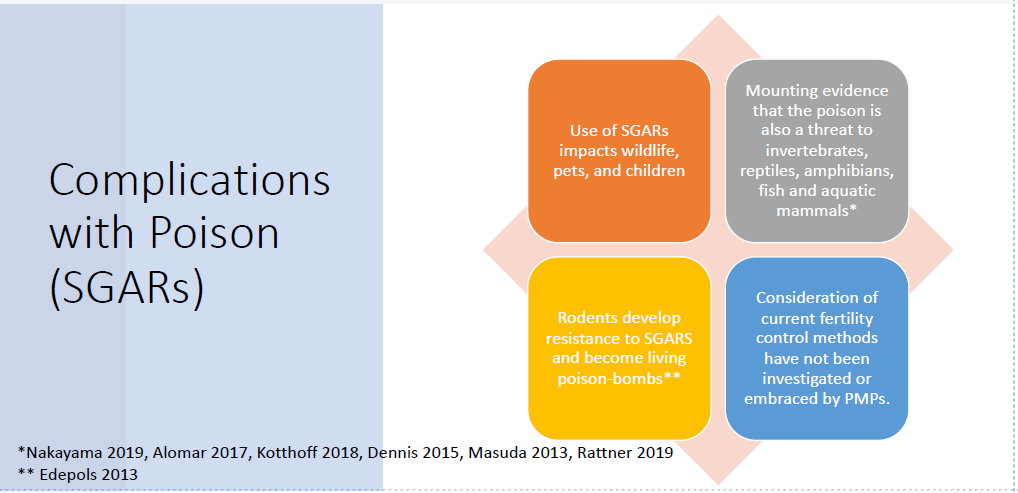
What can we do to stop anticoagulants from infiltrating the food web and killing non-target species?
Replace commercially used blood-thinning rat poisons that are killing non-target wildlife and pets with an effective, non-toxic rat birth control rodent management solution, while improving sanitation and exclusion.
During a year-long pilot study, a mixed-use business district in Washington D.C. decreased its rodent population 99% by utilizing the rat birth control solution, called ContraPest®, which we are using for the Queen Anne pilot study.
Extensive scientific studies have shown that ContraPest® does not bioaccumulate inside the body of non-target species (it is not a hormone) and therefore does not impact predators that eat rats that have ingested this product.
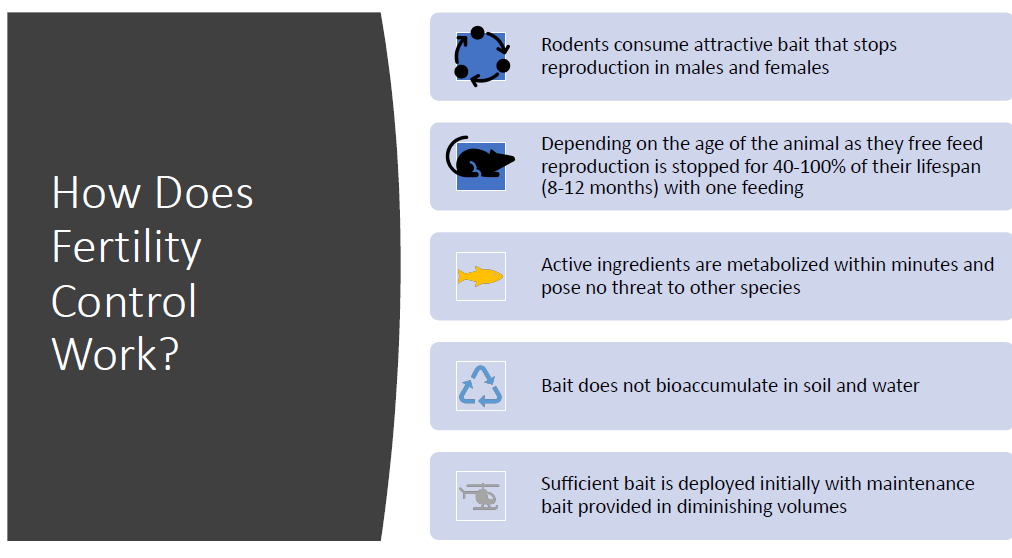
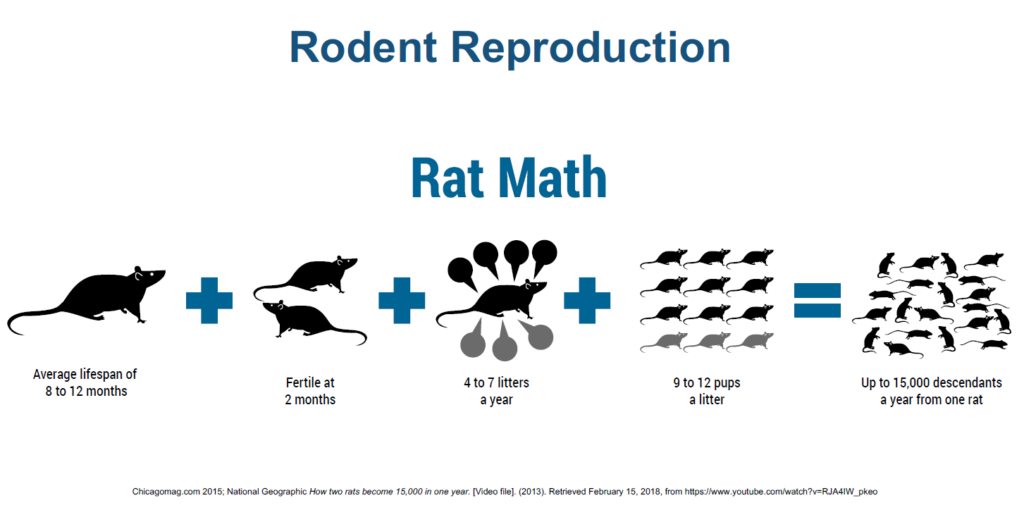
How Deployment and Monitoring of a Business District Pilot Study Could Work
An eco-conscious pest management partner and activist team should:
- Ensure that ALL poison bait stations are properly disposed*;
- Deploy rat birth control bait stations throughout the alleyways and non-toxic rat deterrents inside businesses, if needed;
- Clean and monitor the bait stations on a monthly basis for consumption, and refill as needed. The amount of necessary fertility control product will decrease over time as the rat population decreases, thereby decreasing pest control costs for business owners.
- Collect bait consumption data for analysis that shows population decline.
- Address business concerns around maintenance of the bait stations or the very unlikely case of increased rat activity.
- Our current goal is to remove blood-thinning poisons from our Upper Queen Anne business district (encompasses Queen Anne Ave N., Boston to Galer) which covers 735,000 square feet of commercial space with rat birth control for an estimated monthly cost is $2,600 a month. If every business in the area participates it breaks down to just $18 per business per month.
Get Involved
Are you an Upper Queen Anne business that would like to participate in the pilot study, or someone who would like to remove rat poisons from their Seattle neighborhood? Call or e-mail Tanea Stephens at 206-579-4545 or searatschapter@gmail.com to get started.
Residential Rat Birth Control
People we talk with want to rid their homes of blood-thinning rat poisons. Because there is so much demand, beginning summer 2022, “In Harmony” will offer a nationwide residential DIY rat birth control subscription service. To be placed on a list for more information once it becomes available, sign up here. For those who want a hands-off approach to managing rats, Parker Eco Pest Control now offers Seattle metro residential full service rat birth control management. To get started with residential full service rat birth control, sign up here.
*Note: when you decide to ditch rat poison for sanitation, exclusion, and non-toxic rodent control products, NEVER throw your old poison bait boxes in the garbage where they end up in the landfill, potentially poisoning rats, eagles, vultures, and other wildlife. If your pest control company does not pick up your old bait boxes, and you are in Seattle, send an e-mail to searatschapter@gmail.com to request a free bait box pick-up and drop-off to the King County Toxic Waste Disposal facility.
The Genesis Story
Tanea Stephens, a RATS Volunteer and Queen Anne resident became concerned about rodenticides in her neighborhood when a rare Snowy Owl visitor set up residence near the business district in October 2020. She took inventory of the toxic rat poisons and found 70 AR bait boxes along the ½ mile stretch of Upper Queen Anne’s business district alleyways. After becoming the Washington state chapter representative for RATS and brainstorming with pilot study partner FYXX Foundation, the idea for Poison Free By 2023 was born. If the study garners the anticipated results, Queen Anne will become the showcase neighborhood for our Poison Free by 2023 citywide campaign and provide a case study that shows rats can be effectively managed without lethal poisons that harm non-target wildlife, pets and children.
Update: One year after the Queen Anne departure, Urban Raptor Conservancy reports that it tested 29 pellets that the Snowy owl cast onto rooftops and beneath roost trees and rodent bones were abundant in the pellets; a few were tested for toxicology and found evidence of anticoagulant rodenticides.
You can learn more about: our Snowy Owl visitor in this Queen Anne & Magnolia News Article; the pilot study in another Queen Anne & Magnolia News feature and Stranger Article; and a Queen Anne & Magnolia News feature on the developer deployment.
Top 3 False Claims by Pest Control Companies
FALSE: The poisons we use are safe. There is no proof that our poisons kill non-target wildlife.
FACT: There is no such thing as a safe rat poison. Current bait box poisons are infiltrating the entire food web and not only killing rats. There have been hundreds of scientific studies showing accumulation of rat poison in species of all kinds. Children under age six and domestic pets are known to have been poisoned.
FALSE: If we can’t use anticoagulant rodenticides (ARs), there will be a public health crisis.
FACT: Improving sanitation and installing exclusion helps remove rat attractants, and there are non-toxic alternatives that can be used to manage rodent populations. We are only asking people and companies to stop using four of the most deadly AR poisons.
FALSE: Rats consume poison inside the box and therefore it cannot poison children or pets.
FACT: The loose, often bright blue bait is consistently found outside bait boxes. Rats carry rat poisons outside boxes where children and pets are attracted to them. Poisoned rats eat the bait both inside and outside the box. They leave the boxes, sickened and sluggish, becoming easy prey for raptors and other wildlife.
